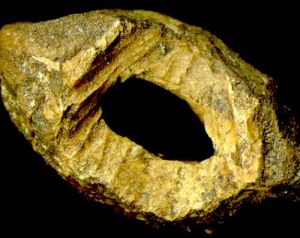Dating the initial arrival of humans on pristine island ecosystems
Establishing the timing and sequence of events in the human settlement of new landmasses is key to understanding drivers of ecological impact

The last major prehistoric dispersal of modern humans occurred with the discovery and settlement of the remote and scattered islands of East Polynesia. This remarkable episode included the colonisation of more than 500 tropical, subtropical, temperate, and subantarctic islands comprising 289,000 km2 of land scattered over 20 million km2 of ocean.
Previous work dating woody seed cases of native trees with distinctive chew marks made by the introduced commensal Pacific rat showed that New Zealand could not have been settled any earlier than the middle of the 13th century. The Pacific rat spread with voyaging humans in the Pacific region, therefore its earliest presence indicates initial human contact. Analysis of a huge database of published radiocarbon dates from archaeological sites throughout the eastern Pacific has shown that New Zealand was settled not late or early relative to other islands in this region, but at virtually the same time as the rest of East Polynesia.
Over 1400 radiocarbon dates from 14 East Polynesian archipelagos were analysed to show that initial prehistoric colonsation from Tonga-Samoa was earliest in the Society Islands c. AD1025-1120; centuries later than previously assumed. It then dispersed to all the remaining island groups, which were settled in less than a century of each other, between c. AD1200-1290. Only radiocarbon dates based on the most reliable dating material (charcoal and twigs from short-lived plants, seeds and leaves) were used to make this robust conclusion.
A precise time for initial settlement on an island is important to determine as it provides the starting point for establishing the rate of ecological and cultural change following the arrival of humans and their introduced commensals.
Some key papers
Wilmshurst JM, Hunt T, Lipo C, Anderson A 2011. High precision radiocarbon dating shows recent and rapid initial human colonization of East Polynesia. Proceedings of the National Academy of Sciences (USA) 108: 1815–1820.
Wilmshurst JM, Anderson AJ, Higham TFG, Worthy TH 2008. Dating the late prehistoric dispersal of Polynesians to New Zealand using the commensal Pacific rat. Proceedings of the National Academy of Sciences (USA) 105: 7676–7680.
Rieth T, Hunt TL, Lipo C, Wilmshurst JM 2011 The thirteenth century Polynesian colonisation of Hawai'i Island. Journal of Archaeological Science 38: 2740–2749.
Wilmshurst JM, Higham TFG 2004. Using rat gnawed seeds to independently date the arrival of Pacific rats and humans to New Zealand. The Holocene 14: 801–806.
Prebble M, Wilmshurst JM 2009. Detecting the initial impact of humans and introduced species on island environments in Remote Oceania using palaeoecology. Biological Invasions 11: 1529–1556.
Key contact
 Janet Wilmshurst
Janet Wilmshurst
Key collaborators
Atholl Anderson and Matiu Prebble (Australian National University); Nick Porch (Deakin University)
Funders
Royal Society of New Zealand Marsden Fund; Manaaki Whenua-Landcare Research SSIF

